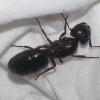Hi guys, I am somewhat new to the anting scene and have not had much luck so far. I have been going to the woods near my house everyday and searching for wood ant queens (or even better a queen from the genus temnothorax). I have found a few of these queens but they were all dead. I know that Temnothorax ambiguus and curvispinosus colonies can be found inside of acorns, but all of the acorns in these woods have been destroyed by the squirrels. So now I am just searching in dead logs and trees as well as under rocks for some type of wood ant queen. I also tried making small incisions in the logs to try to find the nest of these ants. Does anybody have any tips or know of any special ways to isolate/bait a wood ant queen? I saw that the people on this site are generally very helpful/knowledgeable in these forums so I thought I would ask you guys. Thanks! I live in New Jersey by the way.
Zach


















